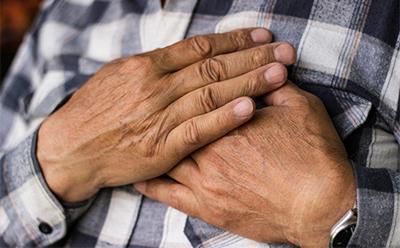
Policy impact implications
Degenerative heart valve disease is a growing problem in the ageing populations of Europe and North America. Also, tens of millions of people in low- and middle-income countries of the global south, experience valve failure following bacterial throat infections. Importantly, so-called, rheumatic heart valve disease affects large numbers of adults of all ages in these poorer parts of the world.
The current state of the art for the treatment of aortic heart valve disease is rapidly moving towards transcatheter aortic valve implantation, TAVI, and away from traditional open-heart surgery. TAVI involves the deployment of a prosthetic valve comprising three components: a metallic frame, a material skirt over the frame to avoid back flow of blood into the heart and prosthetic leaflets that perform the valve function of opening and closing with every heart-beat.
In North American and Europe, TAVI is being offered to increasing numbers of lower risk patients. In the United States of America, there are now over 700 TAVI centres. In contrast, there is a vast unmet need to provide replacement valves to both young and old patients in the global south. Whilst the demographic needs described above are very different, there is one thing that is strikingly common; that is, the need to be able to appropriately treat patients who have already received a valve replacement but for whom this device has degenerated and requires replacement. Although further data is needed, evidence suggests that replacement heart valves have a maximum durability of 10-12 years.
This project aims to address the need for repeated valve replacement by developing new design concepts made possible by additive manufacturing approaches such as laser metal fusion. To maximise the success of this potentially transformative approach, it will be necessary to establish strong engagement with healthcare regulators and public policy makers, something that has been recognised and initiated at a very early stage in the project. Engagement with regulators in Europe and North America is readily available as is access to guidance bodies such as the National Institute for Care and Health Excellence, NICE. However, to achieve policy impact, leading to widespread treatment of heart valve patients in the global south, requires a better understanding of the healthcare and regulatory processes and cycles across a swathe of heterogenous nations with diverse political, social, economic and ethical systems.
Technological success in the project will only deliver real benefit to patients, as early as possible, if policy makers, regulators and clinicians are convinced of the merits of the technologies. It remains to be seen how widely and to what extent, the well-established regulatory processes in Europe and North America are mirrored in other territories. Indeed, much needs to be learned about the regulatory frameworks and healthcare infrastructures in the global south. Ultimately, the humanitarian aims of this project will be satisfied through impact on nation state public policy such that catheter laboratories are available with well-trained cardiologists, nurses, radiologists etc, along with affordable TAVI devices and procedures that are best suited to the target patient population. In some cases, fundamental discussion and education will be necessary to generate the recognition of the need for and value of appropriate investment in redo-TAVI practice that is affordable and widely available.
It is hoped that healthcare policy debate, particularly in the UK, with regulators, government, commissioners, professional bodies and clinicians, all initiated early in the project, will lead to recognised guidance recommendations from NICE that will be similarly supported across Europe and North America. In so-doing, this will provide a framework on which to support the humanitarian development of redo-TAVI across the global south.
By Prof. Neil W. Bressloff, 5th March 2020.